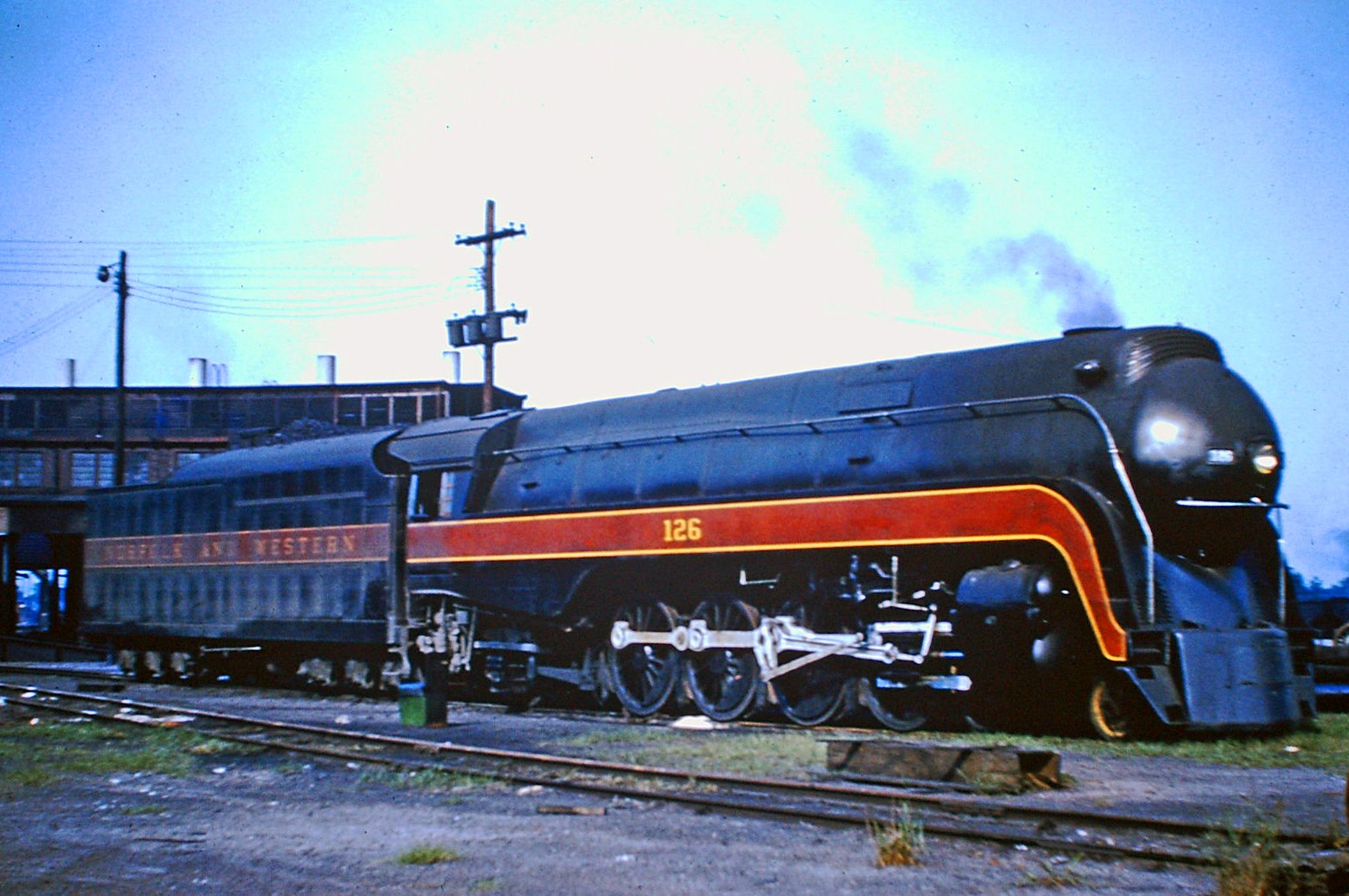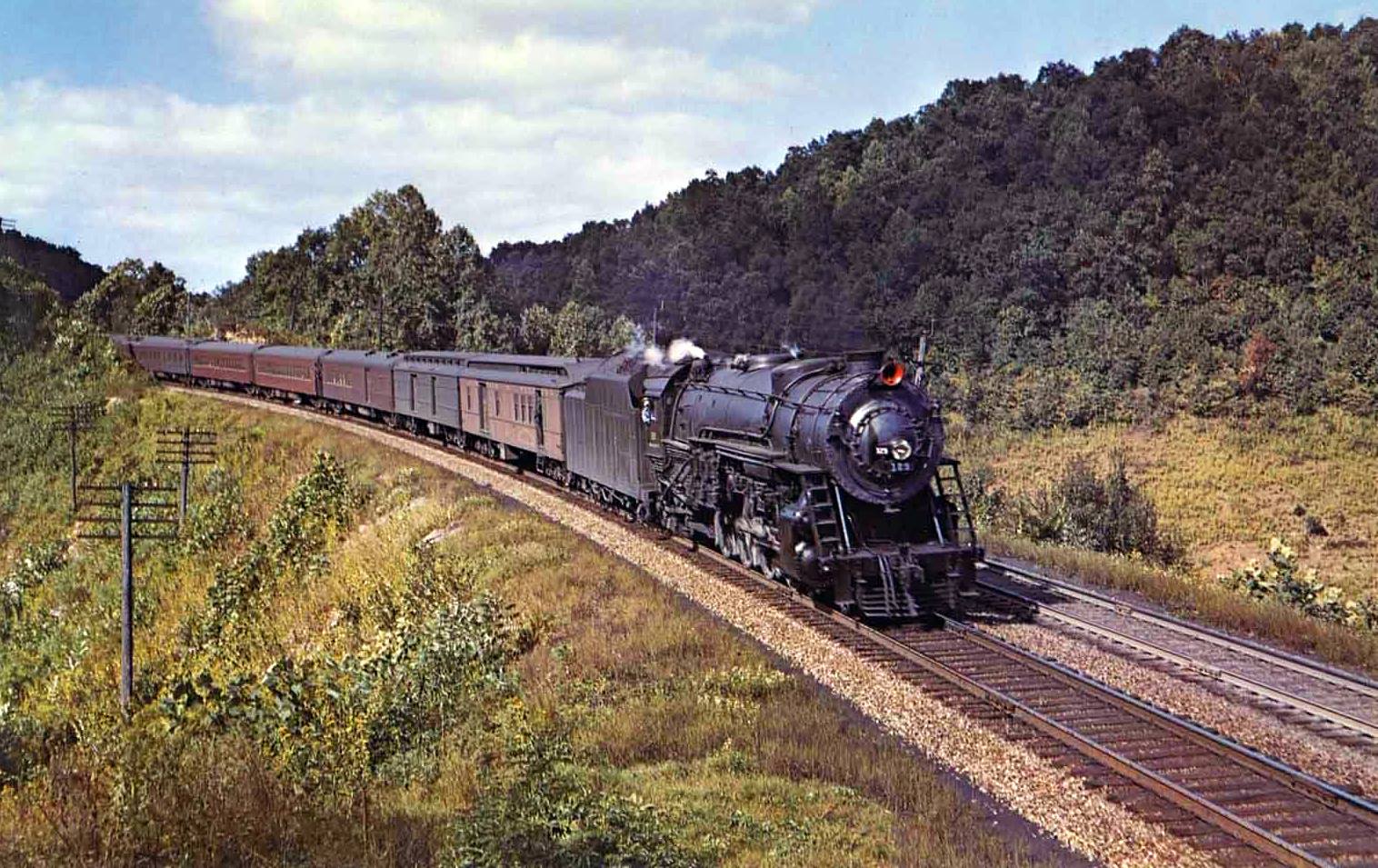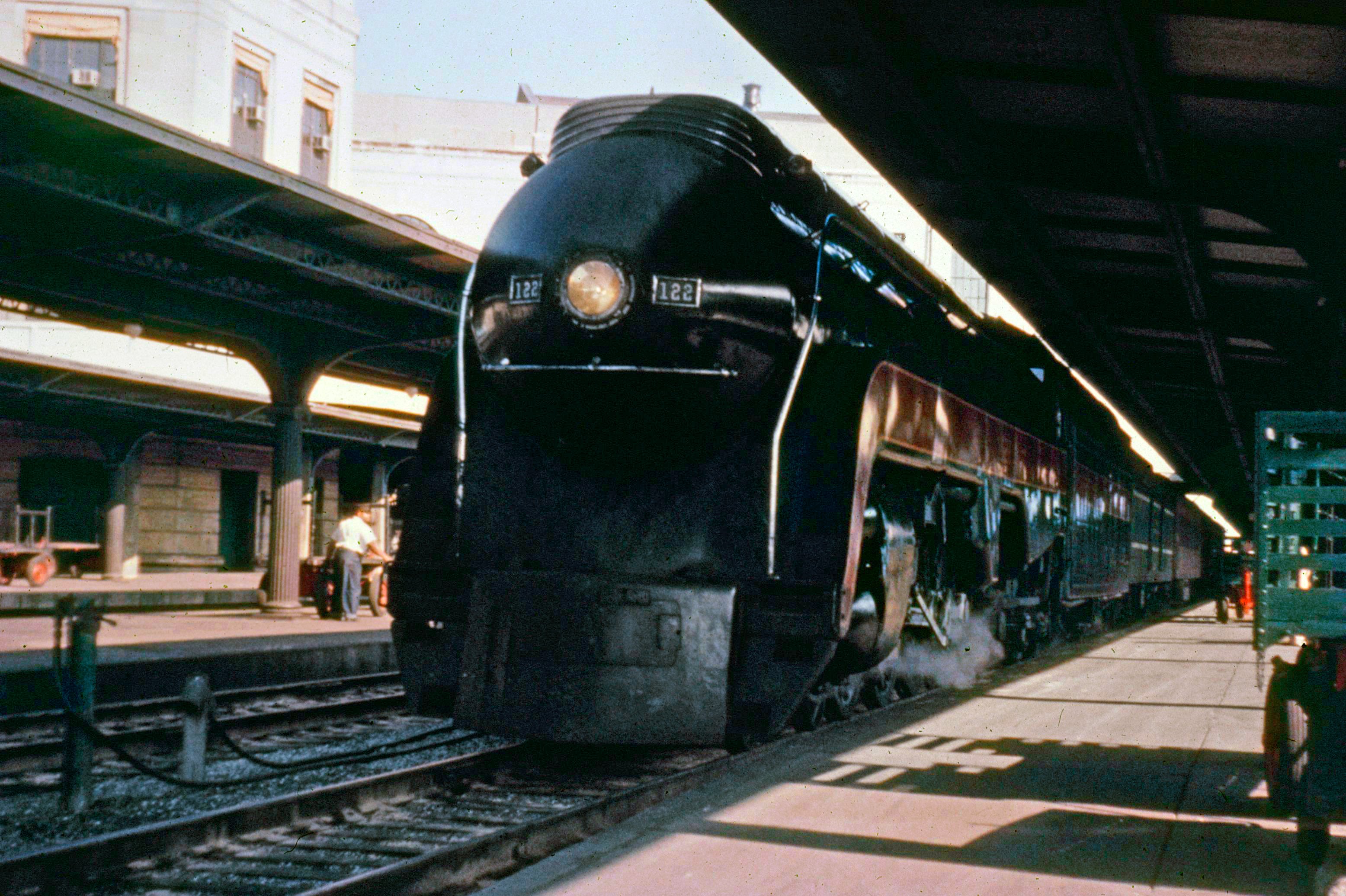Norfolk & Western 4-8-2 (Class K)
Last revised: May 8, 2023
By: Adam Burns
Norfolk & Western's 4-8-2's were some of the last locomotives it put into service which were either not built to "Super Power" specifications or non-articulated. The Mountains performed duel roles on the railroad, utilized in both freight and passenger assignments.
The first examples hit the road around World War I while the last entered service during the mid-1920s. Perhaps somewhat surprisingly, following the new 4-8-4 J's the N&W began streamlining some of its 4-8-2's with very similar shrouding making it near impossible to tell the two apart unless one counted the axles.
Many Mountains remained on the roster until the railroad reluctantly gave up on steam in the late 1950's. Despite the late date of the fleet's retirement not many of N&W's famous designs met the scrapper's torch. A few like, including a few of its 2-8-8-2's, 4-8-4 #611, and others were spared. However, no 4-8-2's remain preserved.
 Norfolk & Western 4-8-2 #126 (K-2a) is seen here at Norfolk, Virginia on June 13, 1957. Manufactured by Baldwin in 1923, the K-2's were rebuilt by the railroad during 1945-1946. A handful, like #126, were streamlined; the shrouding closely mimicked the much more famous J's (4-8-4).
Norfolk & Western 4-8-2 #126 (K-2a) is seen here at Norfolk, Virginia on June 13, 1957. Manufactured by Baldwin in 1923, the K-2's were rebuilt by the railroad during 1945-1946. A handful, like #126, were streamlined; the shrouding closely mimicked the much more famous J's (4-8-4).By the turn of the 20th century trains were becoming longer and heavier due to demand as well as the widespread use of steel in car construction (both as a measure of safety and increased freight tonnage). As a result, larger and more powerful locomotives were needed.
In 1911, N&W neighbor Chesapeake & Ohio began testing the 4-8-2 wheel arrangement, dubbed "Mountains," for passenger service. The design was based upon recommendations from the American Locomotive Company (Alco).
The first two examples had issues although there was no denying their power, easily outperforming C&O's stable of 4-6-2's in moving heavy trains over the stiff grades of the Allegheny and Mountain Subdivisions. The C&O never followed up for more based from this design but did roster updated versions some years later.
The Norfolk & Western took notice of C&O's new wheel arrangement and built its own between 1916 an 1917. Intended for similar assignments moving passenger trains they were given Class K-1 and numbered 100-115.
The N&W experienced similar satisfactory results with these initial 4-8-2's; the K-1's provided nearly twice as much tractive effort (about 57,200 pounds) as its E Class 4-6-2's and larger tenders capable of holding 6,000 more gallons of water and 10 extra tons of coal meant they could operate further between stops.
The N&W probably realized the drawbacks of C&O's first Mountains where small drivers and long rods made the locomotives very hard on the track. The K-1's sported 70-inch drivers and carried no such issues. While they were designated for passenger service they occasionally found work in freight assignments as well, a common trait of Mountains in general and on the N&W in particular.
 A Norfolk & Western publicity photo featuring 4-8-2 #129 (K-2a) with train #4, the eastbound "Pocahontas," near Shawsville, Virginia in 1942. Its consist here included an RPO, baggage, combine, two air-conditioned coaches, diner, and sleepers.
A Norfolk & Western publicity photo featuring 4-8-2 #129 (K-2a) with train #4, the eastbound "Pocahontas," near Shawsville, Virginia in 1942. Its consist here included an RPO, baggage, combine, two air-conditioned coaches, diner, and sleepers.Only a few years after these entered service more were purchased in 1919 via the United States Railroad Administration (USRA), which had taken over the nation's railroads during World War I.
These 4-8-2's were built to USRA's heavy Mountain standards; the batch of ten was numbered 116-125 and listed as Class K-2, manufactured by Alco's Brooks Works.
They were somewhat larger than their predecessors weighing around 359,500 pounds, offering tractive efforts of nearly 63,000 pounds, and carried a larger tender (22,000 gallons; 30 tons).
Additionally, a subclass of K-2a's arrived from the Baldwin Locomotive Works in 1923. Numbered 126-137 they were very similar to the original K-2's and also based from the USRA design. The N&W's final batch of Mountains were, again, manufactured at its legendary shops in Roanoke.
Outshopped during 1926 these ten locomotives were listed as Class K-3 and the only ones assigned specifically to freight service; they carried much smaller drivers (63 inches) and a smaller tender but boasted the highest tractive effort of any N&W 4-8-2 at nearly 70,000 pounds.
While designed for high speed service on lower grades the smaller drivers resulted in the same track-pounding issues (a condition known as "dynamic augment" whereby the heavy rods would slightly pull each driving axle completely off the rail and then slam it back down during each rotation) C&O suffered with its original Mountains forcing and the N&W operated them at speeds under 35 mph.
They remained on the roster for less than 20 years when six where sold to the Richmond, Fredricksburg & Potomac in 1944 and the other four went off to the Rio Grande a year later in 1945.
By then the K-3's had been downgraded to other assignments after the powerful and fast Class A 2-6-6-4's began arriving in the late 1930s although they were pressed back into the spotlight during World War II until being sold to the aforementioned railroads.
During 1945-1946 the remaining K-2's and K-2a's were significantly overhauled by the N&W. They had always been the workhorses on the railroad until the newer power appeared in the 1930s (Class Y's, Class A's, and the Class J's of the 1940s) working heavy freights all over the system, including the Shenandoah Valley route to reaching Hagerstown, Maryland.
During the rebuild N&W fitted them with roller bearings everywhere except the drivers along with upgraded stokers, fireboxes, and cylinders.
 Norfolk & Western 4-8-2 #122, shrouded in streamlining similar to the 4-8-4 J's, arrives at Richmond's Broad Street Station during the 1950's. Photographer unknown. Author's collection.
Norfolk & Western 4-8-2 #122, shrouded in streamlining similar to the 4-8-4 J's, arrives at Richmond's Broad Street Station during the 1950's. Photographer unknown. Author's collection.However, most notable was the elegant streamlining, which almost exactly matched the famous J Class 4-8-4's. These locomotives had been shrouding by the N&W's own Frank C. Noel who worked in the passenger car department.
He came up with a design that was somewhat similar to the Milwaukee Road's streamlined Atlantics and Hudsons in that the shrouding generally followed the natural lines of the locomotive. The J's carried a bullet-like appearance with skirting along the running-board which was painted Tuscan Red adorned in gold-leaf pinstriping and lettering.
The rest of the locomotive was standard black. Except for the shorter wheelbase and single trailing axle the rebuilt K-2's and K-2a's were very hard to differentiate from the J's. The K-1's never received this treatment but remained on the roster until 1957-1959 when all were retired, a fate which befell the K-2's/K-2a's at the same time.
SteamLocomotive.com
Wes Barris's SteamLocomotive.com is simply the best web resource on the study of steam locomotives.
It is difficult to truly articulate just how much material can be found at this website.
It is quite staggering and a must visit!
